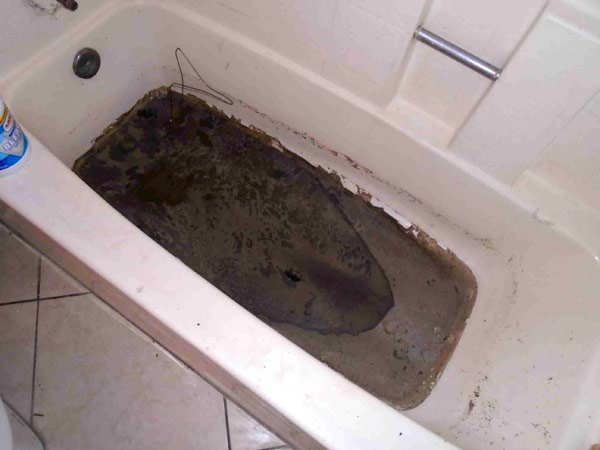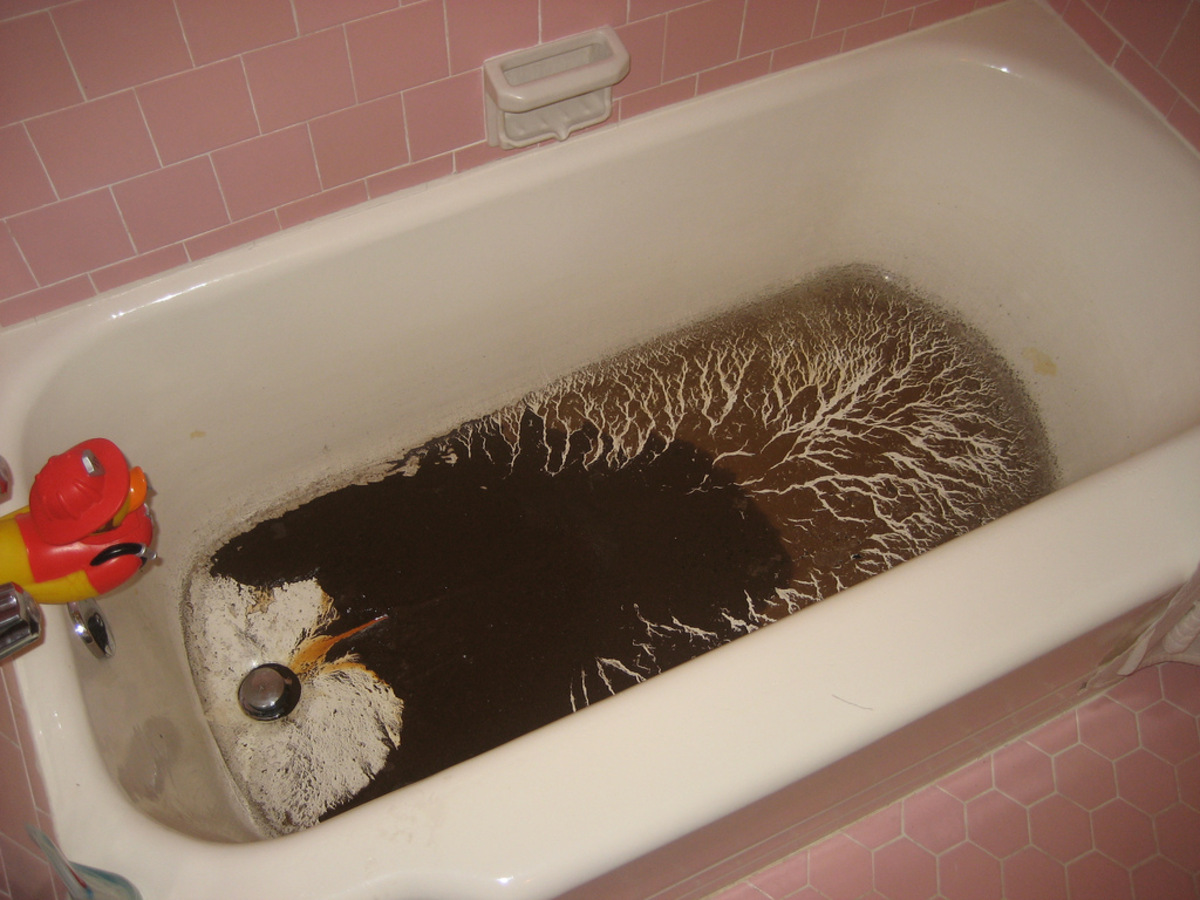Examining the Causes of Sewage Backflow in the Bathtub
Examining the Causes of Sewage Backflow in the Bathtub
Blog Article
They are making a few great observations on the subject of What To Do If Sewage Starts Backing Up Into the Shower overall in this content directly below.

Sewer backup in the bathtub can be a traumatic and unsanitary trouble for any kind of property owner. Not just is it troublesome, but it also presents major health risks and suggests underlying problems with the plumbing system. Understanding why sewage is turning up through the tub is crucial for taking ideal activity to resolve the problem successfully.
Intro to the Problem
Typical Reasons for Sewage Backup
Clogs in the Sewer Line
Among one of the most typical sources of sewage backup is a blockage in the drain line. This can happen as a result of the buildup of debris, oil, or international objects in the pipelines, avoiding proper circulation and creating sewage to back up into your tub.
Tree Root Breach
Tree origins looking for dampness and nutrients can penetrate sewer lines through small splits or joints. In time, these origins can grow and expand, creating substantial damages to the pipes and bring about sewer backup issues.
Recognizing the Issue
When sewage draws back up right into the tub, it's a clear sign of a trouble with the water drainage system. The wastewater that ought to be streaming away from your home is instead finding its back right into your space, which can cause substantial damages and health hazards.
Prospective Causes
A number of variables can add to sewer backup in the tub. From obstructions in the sewer line to issues with the plumbing facilities, recognizing the origin is crucial for finding an option.
Aging Framework
Older homes may have outdated plumbing systems that are extra at risk to rust, cracks, and wear and tear. As pipes age, they come to be much more susceptible to leaks and blockages, increasing the likelihood of sewer back-up events.
Heavy Rainfall or Flooding
Throughout durations of heavy rainfall or flooding, the sewer system might come to be overwhelmed with excess water, creating backups and overflows. This can result in sewage backing up into tubs and various other components inside the home.
Indications of Sewer Back-up
Foul Odors
Undesirable odors emanating from drains or components, especially in the restroom, might indicate sewer back-up concerns. These odors are often solid and persistent, signifying a problem that calls for prompt attention.
Slow Draining Fixtures
Tubs, sinks, and bathrooms that drain slowly or otherwise at all could be experiencing sewer backup. If numerous components are impacted at the same time, it's likely that the problem originates from an usual point, such as the primary sewage system line.
Gurgling Sounds
Odd gurgling or gurgling noises coming from drains pipes when water is running in other places in your house are a sign of air entraped in the plumbing system. This air accumulation can arise from sewer back-up and must be checked out immediately.
Wellness Dangers Related To Sewage Backup
Contamination of Water Supply
Sewer backup can infect the water system in your home, presenting a major health and wellness danger to you and your family members. Direct exposure to contaminated water can lead to intestinal problems, skin infections, and other diseases.
Mold and mildew Development
Moisture from sewer backup can develop suitable problems for mold development in your home. Mold and mildew spores can intensify respiratory issues and cause allergies in sensitive individuals, making punctual cleaning necessary.
Spread of Condition
Sewage contains dangerous germs, viruses, and bloodsuckers that can cause a series of illness, consisting of liver disease, cholera, and gastroenteritis. Entering into contact with sewage or contaminated surface areas places you in jeopardy of infection.
Tidying up After Sewage Back-up
Disinfection Procedures
Completely sanitize and sanitize affected locations after sewage back-up to remove hazardous bacteria and avoid mold and mildew development. Usage suitable cleansing products and safety gear to guarantee risk-free and effective cleaning.
Repair of Impacted Locations
Repair any damage to floor covering, wall surfaces, or fixtures caused by sewer backup. Relying on the level of the damage, you might need to replace carpets, drywall, or various other materials to recover your home to its pre-loss condition.
Immediate Actions to Take
Turning Off Supply Of Water
In the event of sewage backup, it's vital to turn off the supply of water to avoid additional contamination and damages. Locate the primary water shutoff valve in your home and closed it off up until the problem can be solved.
Contacting a Specialist Plumber
Handling sewer back-up is not a DIY task. Contact a qualified plumber with experience in taking care of sewage-related problems to analyze the scenario and perform essential repair work or cleanups.
Staying Clear Of Contact with Contaminated Water
Up until the sewage backup is resolved, prevent contact with infected water to avoid the spread of germs and microorganisms. Use protective equipment if you must remain in the afflicted location and clean your hands extensively later.
Preventive Measures
Routine Upkeep of Sewage System Lines
Arrange regular inspections and upkeep of your drain lines to identify and resolve prospective issues before they intensify into significant troubles. This can include clearing out debris, checking for tree origin intrusion, and fixing any type of damaged pipelines.
Setting Up Backwater Shutoffs
Think about mounting backwater shutoffs in your plumbing system to stop sewage from receding into your home during durations of heavy rainfall or flooding. These valves immediately close when water starts backing up, protecting your home from contamination.
Correct Disposal of Family Waste
Prevent flushing anything other than toilet paper and human waste down the commode to stop clogs and clogs in the drain line. Dispose of oil, oil, and other house chemicals effectively to lessen the risk of plumbing problems.
Why is there sewage coming up from my bathtub?
These gas fumes, like hydrogen sulfide – the gas that leaves a rotten egg smell in its wake and is highly flammable and toxic – can be hazardous to your health. Sewage poses major health risks as it contains harmful bacteria and microorganisms that can be dangerous if exposed to them.
Sewage cleanup should be considered an emergency.
So, why is there sewage coming up from your bathroom? There are several common causes of a sewage backup.
The most common reason for sewage coming up through your bathroom is a clogged sewer line. All plumbing in your bathroom connects to a single drain pipe that leads to the sewer line under your house. This drain line carries all wastewater and sewage away from your home to the city’s sewer system.
When the sewer line becomes clogged or blocked, wastewater has nowhere to go but back toward your house. This results in sewage coming up through your drains, often starting with your tub or shower.
Another culprit may be the sewage ejector pump, which is used when a bathroom, laundry room or any other type of plumbing fixture is located below the level of the main sewer or septic line flowing from the house. Most commonly, ejector pumps are used in homes with basement bathrooms or laundry rooms.
When you experience sewage coming up through your bathtub, it’s always best to contact a professional. Attempts to fix a clogged sewer line without experience often lead to more plumbing damage.
Make sure that no one enters the affected area, and open as many windows as possible. Pre-treat the flooded area with small splashes of chlorine bleach. Wear protection gear like rubber gloves, a mask, and water-resistant coveralls.
https://www.shawlocal.com/the-herald-news/sponsored/2022/08/17/omega-plumbing-10199038/

I ran across that page on Why sewage is coming up through your bathtub when surfing around the search engines. Be sure to pause to distribute this write-up if you enjoyed it. Thank you for taking the time to read it.
Get A Free Estimate
Report this page